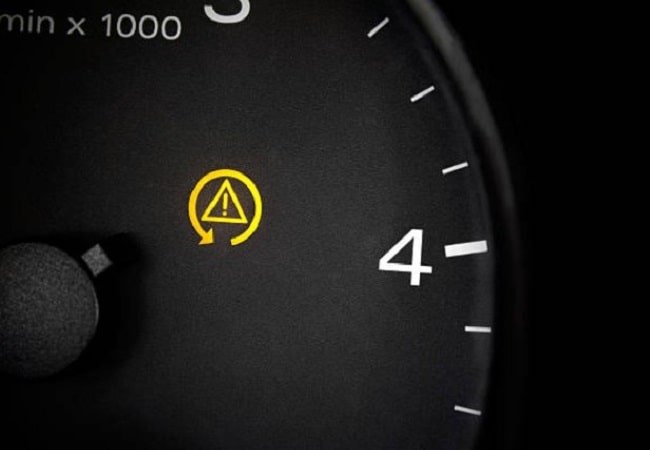The ABS (Anti-lock Braking System) light in a car is an important indicator that alerts the driver about potential issues with the ABS system. Understanding the significance of the ABS light and knowing how to fix Abs light on car it is crucial for maintaining a safe driving experience.
In this guide, we will explore common reasons for the ABS light to turn on, explain the role of the ABS system, discuss potential causes for the ABS light to come on, and provide steps to fix the ABS light issue.
Importance of the ABS Light
The ABS system is designed to prevent the wheels from locking up during braking, allowing the driver to maintain steering control while reducing stopping distances. The ABS light serves as a warning sign, indicating potential problems with the ABS system.
When the ABS light comes on, it is important to address the issue promptly to ensure the continued functioning of this vital safety feature.
Common Reasons for the ABS Light to Turn On
Faulty Wheel Speed Sensors
The ABS system relies on wheel speed sensors to monitor the rotation of each wheel. If a sensor malfunctions or becomes damaged, the ABS light may turn on.
ABS Module Issues
Problems with the ABS module, which controls the ABS system, can cause the ABS light to illuminate.
Faulty Wiring or Connectors
Damaged or loose wiring connections related to the ABS system can trigger the ABS light.
Low Brake Fluid
In some cases, a low brake fluid level can cause the ABS light to come on, as it may indicate a leak or a problem with the brake hydraulic system.
ABS Pump or Hydraulic Unit Problems
Issues with the ABS pump or hydraulic unit, such as a malfunctioning pump motor or a faulty solenoid valve, can lead to the illumination of the ABS light.
Explanation of How To Fix Abs Light On Car
The ABS system monitors the rotational speed of each wheel using wheel speed sensors. When the system detects that a wheel is about to lock up during braking, it modulates the brake pressure to that wheel.
By rapidly pulsing the brake pressure, the ABS system allows the wheel to rotate without locking up, thereby preventing skidding. This modulation of brake pressure is performed by the ABS module, which controls the operation of the ABS system based on input from the wheel speed sensors.
Role of the ABS Light in Indicating Potential Issues
The ABS light acts as a diagnostic tool, signaling that there may be a problem with the ABS system. When the ABS light comes on, it is a warning that the system may not function properly in certain driving conditions. Therefore, it is essential to address the underlying issue to ensure the continued effectiveness of the ABS system.
What to Do When Your ABS Light Comes On?
An ABS indicator light on your dashboard indicates that something has gone wrong with your system and that you should have it checked out. A defective ABS module, low levels in the fluid reservoir, broken wheel speed sensors, or the system being turned off are the four most prevalent reasons for this signal to illuminate.
Check the ABS Fuse
Start by inspecting the ABS fuse to determine if it has blown or if there are any signs of damage. The location of the fuse box and the specific ABS fuse can vary depending on the car model. Consult your vehicle’s manual for the precise location.
Inspect the ABS Fuse
Once you locate the fuse box, open the cover and locate the ABS fuse. Inspect the fuse visually to see if it has blown (the metal strip inside the fuse will be broken) or if there are any signs of burnout.
Replace the ABS Fuse
If you find a blown fuse or signs of damage, replace it with a new fuse of the same rating. Ensure that you use the correct fuse specified for the ABS system to maintain its proper functioning.
Why Is My ABS Light On?
If the ABS light remains illuminated after checking and replacing the fuse, it indicates that the issue lies beyond a simple fuse problem. In such cases, it is advisable to consult a professional mechanic or an automotive service centre to diagnose and repair the specific problem with the ABS system.
They have the necessary tools and expertise to accurately identify the underlying cause of the ABS light being on and perform the required repairs.
Regular Maintenance for the ABS System
A brake inspection is included as part of your annual CVIP visit. Every set of brakes requires a specific amount of brake lining for safety and stopping force.
To reduce downtime, brake pads and linings should be serviced on a regular basis. Changing brake pads is significantly less expensive and time-consuming than correcting brake damage!
ABS pressure actuators rely on functional brakes. Check the air gap between the plate and the brake coil on a regular basis. The air gap widens when the brake lining deteriorates. Adjust the brakes as needed to avoid rotor and other component damage.
To ensure the optimal functioning of the ABS system and prevent potential issues, it is essential to follow regular maintenance practices:
Brake Fluid Check
Regularly inspect the brake fluid level and ensure it is within the recommended range. If the fluid is low, it may indicate a leak or a problem with the brake hydraulic system. In such cases, have the issue inspected and repaired promptly.
Wheel Speed Sensor Inspection
Inspect the wheel speed sensors for any signs of damage or debris accumulation. Clean the sensors if necessary and ensure they are properly mounted and functioning correctly.
ABS Module and Wiring Inspection
Check the ABS module and wiring connections for any visible damage, corrosion, or loose connections. If any issues are detected, have them repaired by a professional.
Being Mindful of Warning Signs
Pay attention to any warning signs that may indicate potential ABS system issues. These signs may include:
ABS Light Illumination
If the ABS light comes on and remains illuminated, it indicates a potential problem with the ABS system.
Unusual Brake Pedal Behavior
If the brake pedal feels spongy, pulsates excessively, or is difficult to press down, it may indicate a problem with the ABS system.
Strange Noises or Vibrations
Any unusual noises or vibrations during braking could be a sign of ABS system malfunction.
Warning Messages
Some vehicles display warning messages related to the ABS system on the instrument cluster. If you see such messages, take them seriously and have the system checked.
Importance of Safe Driving Practices
While ABS systems are designed to enhance safety, it is important to practice safe driving habits to prevent ABS issues:
Maintain Proper Tire Pressure
Keep your tires properly inflated according to the manufacturer’s recommendations. Low tire pressure can affect the functioning of the ABS system.
Avoid Hard Braking
Try to brake smoothly and avoid abrupt or hard braking whenever possible. Sudden and harsh braking can put excessive strain on the ABS system.
Frequently Asks Questions (FAQs)
How much does it cost to fix the ABS light?
The cost of fixing the ABS light can vary depending on the specific cause of the issue. It may range from simple and inexpensive fixes like replacing a blown fuse to more complex repairs involving sensor replacements or module repairs. Consulting a professional mechanic will provide a more accurate cost estimate.
Is it safe to drive a car with the ABS light on?
While it is generally safe to drive a car with the ABS light on, it is important to address the underlying issue as soon as possible.
Without a functioning ABS system, your vehicle may have longer stopping distances and a higher risk of skidding or losing control during emergency braking situations.
What is causing my ABS light to come on?
The ABS light can come on due to various reasons, including faulty wheel speed sensors, issues with the ABS module, damaged wiring or connectors, low brake fluid, or problems with the ABS pump or hydraulic unit.
Can low brake fluid cause the ABS light to come on?
Yes, low brake fluid level can trigger the ABS light to come on. It may indicate a leak or a problem with the brake hydraulic system, which needs to be addressed promptly.
Can low tire pressure cause the ABS light to come on?
While low tire pressure itself may not directly cause the ABS light to come on, it can affect the overall performance of the ABS system. It is important to maintain proper tire pressure to ensure optimal ABS system functioning.
Conclusion
The ABS light in a car serves as a crucial indicator of potential issues with the ABS system. Understanding the common causes for the ABS light to turn on, as well as the importance of the ABS system for safe driving, is essential.
When the ABS light comes on, it is important to take appropriate steps to address the issue promptly. Start by checking the ABS fuse and inspecting it for any damage or burnout. If the issue persists after replacing the fuse, it is recommended to seek professional assistance from a mechanic or automotive service centre.





